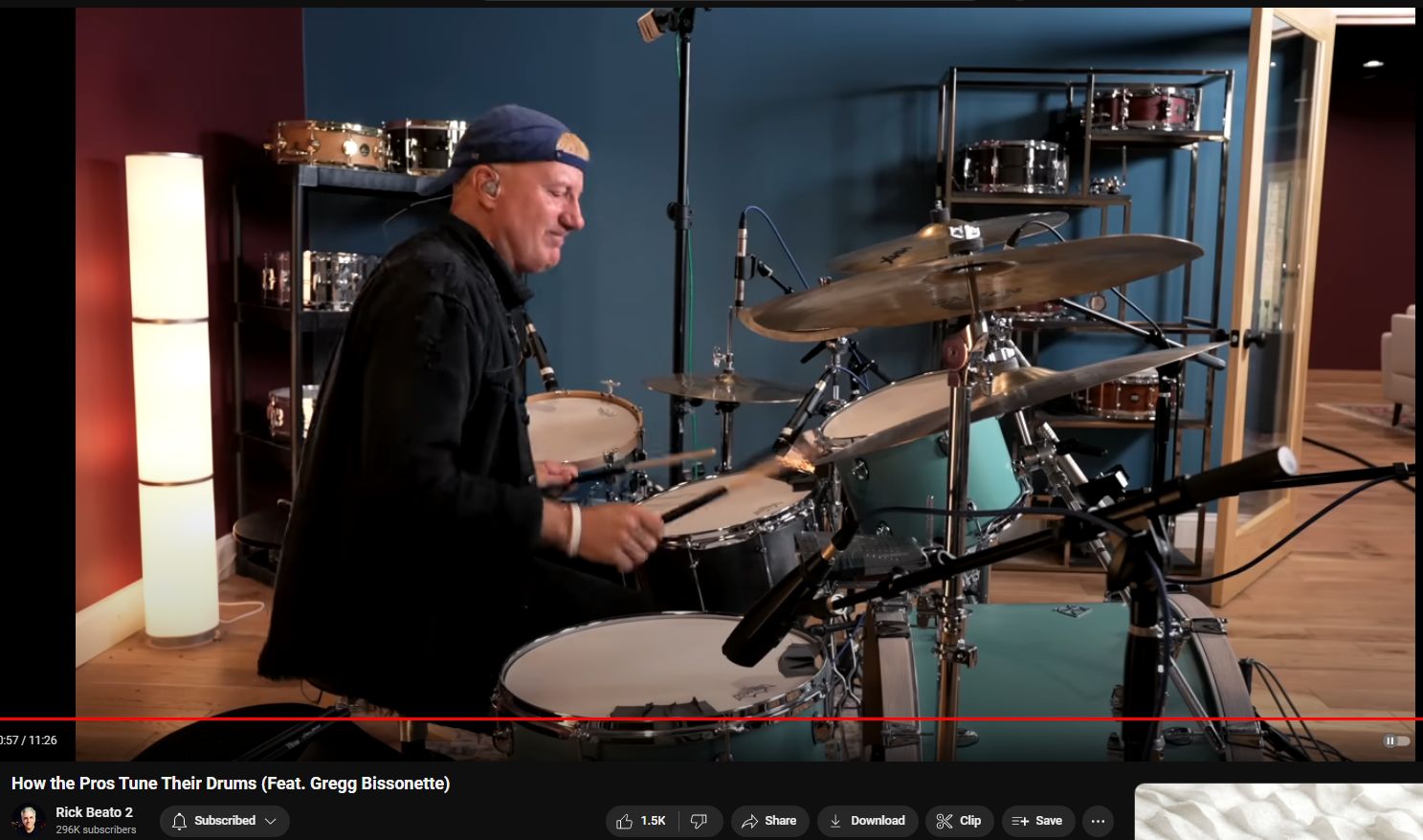Tune to Shell Tone
Gregg Bissonette is a highly respected American drummer known for his versatile playing style and extensive work as a session musician and touring drummer. Born on June 9, 1959, in Detroit, Michigan, Bissonette began playing drums at a young age and quickly developed his skills.
Throughout his career, Gregg Bissonette has collaborated with a diverse range of artists across various genres, including rock, jazz, pop, and fusion. Some of the notable musicians and bands he has worked with include:
1. David Lee Roth: Bissonette gained widespread recognition for his tenure as the drummer for David Lee Roth’s band in the late 1980s and early 1990s. He performed on Roth’s solo albums and toured extensively with the group.
2. Ringo Starr & His All-Starr Band: Bissonette has been a member of Ringo Starr’s All-Starr Band since 2008, performing alongside the former Beatle and other renowned musicians in a rotating lineup.
3. Maynard Ferguson: Bissonette played drums for jazz trumpeter Maynard Ferguson’s band in the 1980s, showcasing his versatility in jazz and big band settings.
4. Joe Satriani: Bissonette has collaborated with virtuoso guitarist Joe Satriani on various projects, including albums and live performances.
5. Toto: Bissonette has toured with the rock band Toto, filling in for their regular drummer during live shows.
In addition to his work as a touring and session drummer, Gregg Bissonette is also an accomplished educator and clinician, conducting drum clinics and masterclasses around the world. He has released instructional videos and authored educational materials for drummers of all levels.
Overall, Gregg Bissonette’s contributions to the music industry as a skilled and versatile drummer have earned him a reputation as one of the most respected and in-demand drummers in the business.

The tone and resonance of a drum shell play a significant role in shaping the sound of a drum. Drum shell material, construction techniques, thickness, and size all contribute to the drum’s overall tone and resonance.
Here are some factors that influence drum shell tone and resonance:
1. Material: Drum shells are commonly made from various materials, including wood, metal, acrylic, and composite materials. Each material has its unique sonic characteristics. For example:
– Wood: Different types of wood (e.g., maple, birch, oak) produce different tones. Maple is known for warm, balanced tones, while birch tends to have a brighter, more focused sound.
– Metal: Metal shells (e.g., steel, brass, aluminum) often produce brighter, more cutting tones with pronounced attack.
– Acrylic: Acrylic shells produce a distinctive, clear sound with enhanced projection and sustain.
2. Construction Technique: The way the drum shell is constructed can affect its resonance. Factors such as shell thickness, reinforcement rings, bearing edges, and shell hardware can all impact the drum’s sound. For example, thicker shells generally produce deeper, fuller tones with more sustain, while thinner shells offer greater sensitivity and responsiveness.
3. Size: The size of the drum shell also influences its tone and resonance. Larger drums tend to produce lower frequencies with more volume and sustain, while smaller drums produce higher-pitched tones with quicker decay.
4. Shell Finish: The finish applied to the drum shell can affect its resonance. Glossy finishes tend to reflect sound waves more, resulting in brighter tones, while matte or satin finishes absorb more sound, producing warmer tones.
5. Mounting System: The mounting system used to attach the drum shell to hardware (e.g., suspension mounts, direct mounts) can influence the drum’s resonance by affecting how freely the shell vibrates. Suspension mounts, for example, allow the shell to vibrate more freely, enhancing resonance and sustain.
Overall, drum shell tone and resonance are complex phenomena influenced by multiple factors. Drummers often experiment with different drum shell materials, sizes, and construction techniques to achieve their desired sound characteristics for different musical styles and preferences.